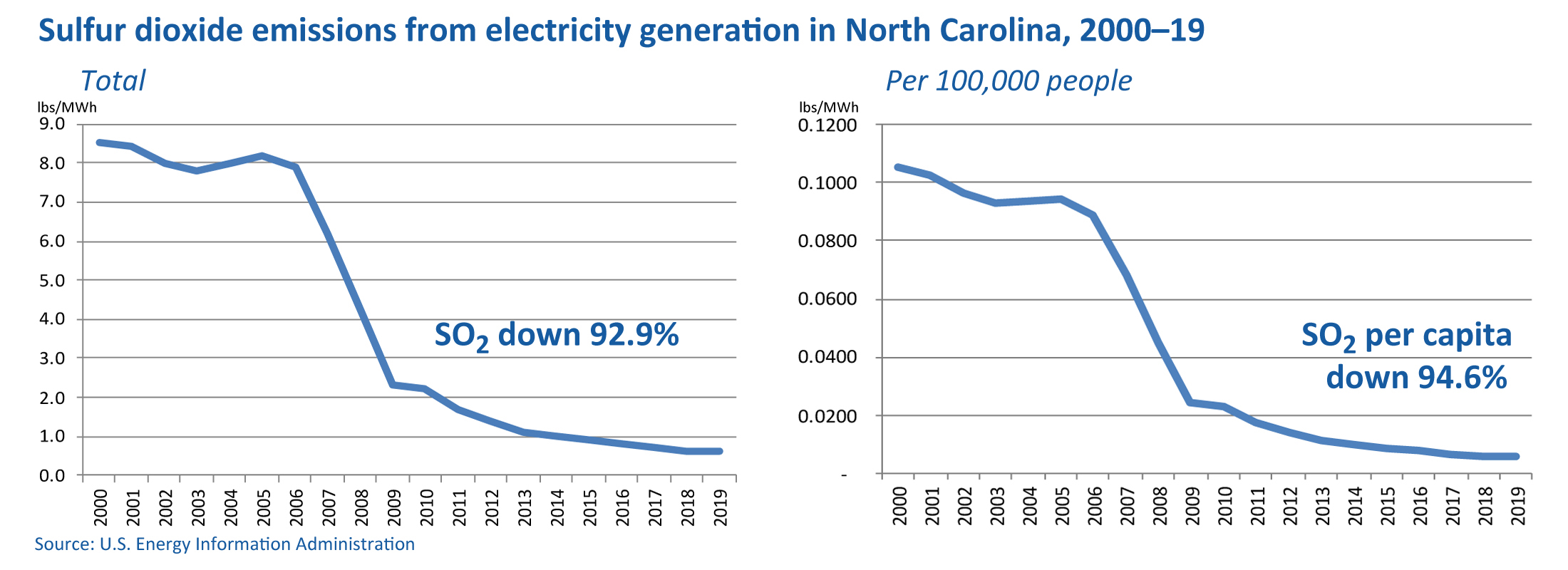I have good news. It’s news so ridiculously underreported that a recent Civitas poll found that 44 percent of North Carolinians somehow believe the environment in North Carolina is less clean than it was 10 years ago.
If you remember the surprising charts from my report on The Market Forces Behind North Carolina’s Falling Emissions, I have updated them with the most recent data:



This time I also chose to look at emissions per capita. I remembered the finding last year that while the nation’s CO2 emissions were at their lowest level since 1992, our CO2 emissions per capita were at their lowest rate since 1950.
It isn’t just that North Carolina sees lower emissions. We’re doing that while continuing to be one of the nation’s fastest-growth states in terms of population.
Perhaps you think this is a consequence of renewable generation? Not really; renewable energy’s role here is negligible. My report examined that question:
No significant impact on CO2 reduction through renewable energy
The Brookings report included a brief note about renewable energy resources such as wind and solar. Those sources “have yet to register as broad an impact” as expected. It found, “this analysis does not find a strong statistical relationship between states’ emissions reductions and solar and wind’s share of power generation.”
In fact, the report found that in most of the states that saw the greatest growth of wind or solar in terms of the states’ share of electricity generation, “carbon emissions rose from 2001 and 2014, as well as in the period since 2008 when wind and solar development has taken place in the country.” (Emphasis added.)
That period since 2008 is also when the decline in natural gas prices owing to fracking began.
So what’s happening? The reasons energy-based emissions have been falling all century in North Carolina (and the U.S.) are driven by the free market, not the government.
Technological change is creating ever more efficient uses of resources. Consumer preferences are favoring less “carbon-intensive” goods and services. An expanding service sector is also resulting in lower emissions.
Most notably, the fracking revolution has made clean-burning natural gas more price-competitive with coal, so electric utilities have increasingly opted for gas as a fuel source. The other major market competitor with coal is nuclear, which has no emissions. Both of these are dispatchable, highly efficient energy sources that don’t eat up huge expanses of land or require expensive backup generation.
In this century, natural gas went from providing less than one percent (0.9 percent) of North Carolina’s electricity to rivaling nuclear for the top spot:
From 2000 to 2016, the share of North Carolina’s electricity generation from coal fell by over half, from 62.1 percent to 28.6 percent. Generation from nuclear rose slightly, from 32.0 to 32.7 percent.
Generation from hydroelectric rose slightly, from 2.6 to 3.4 percent. Generation from solar rose slightly, mostly after 2014, from 0 to 2.6. Generation from all other sources rose slightly, from 2.4 to 2.7 percent (these include wood, petroleum, and biomass).
Generation from natural gas rose dramatically, from 0.9 percent to 30.0 percent.
Good news like this ought to be shared.


